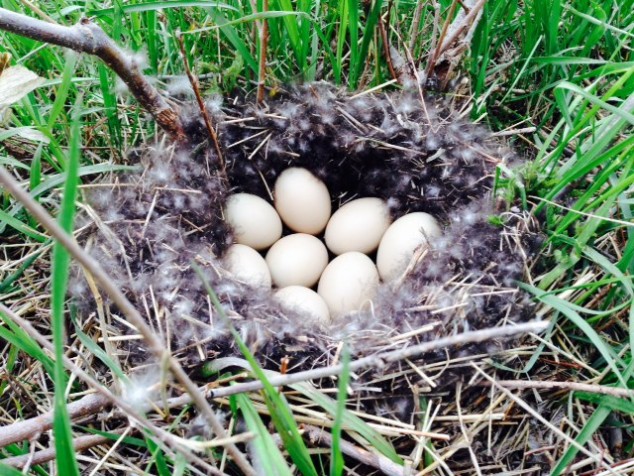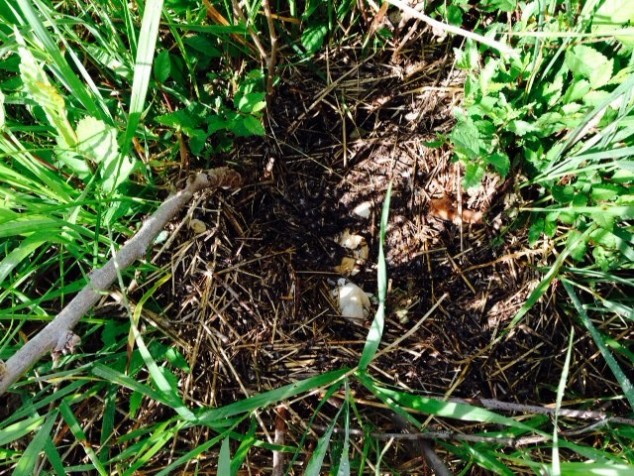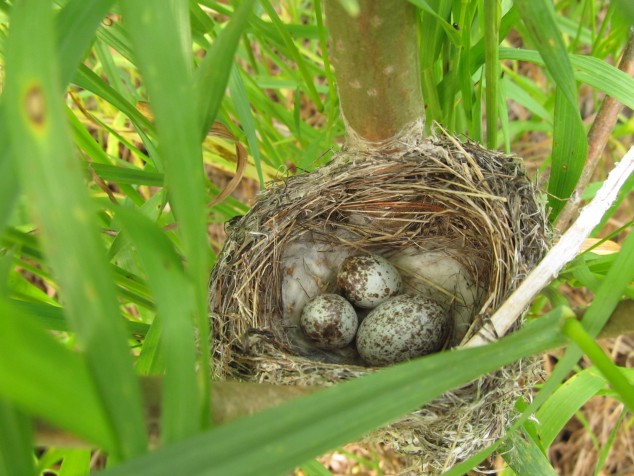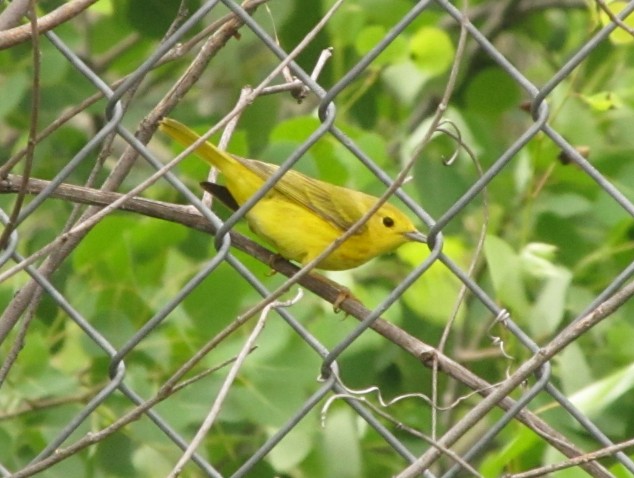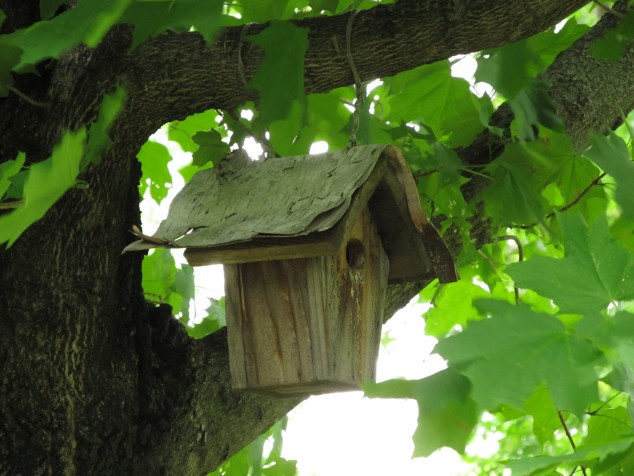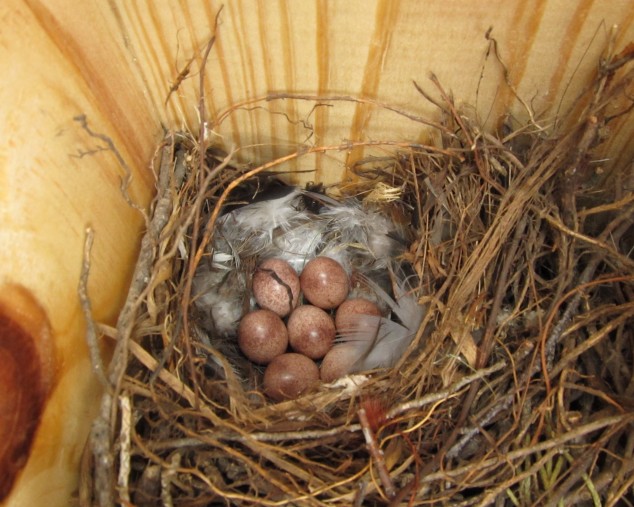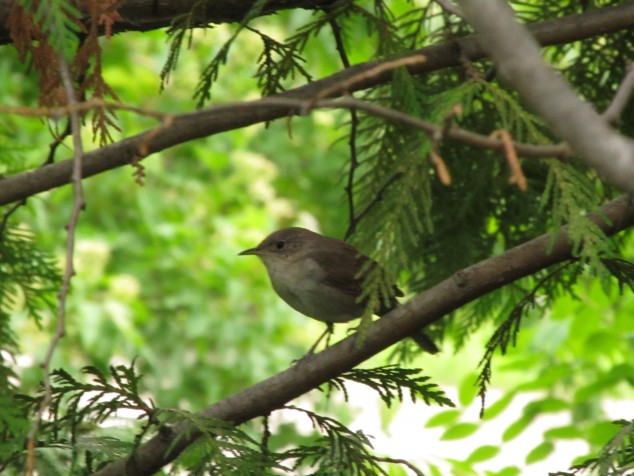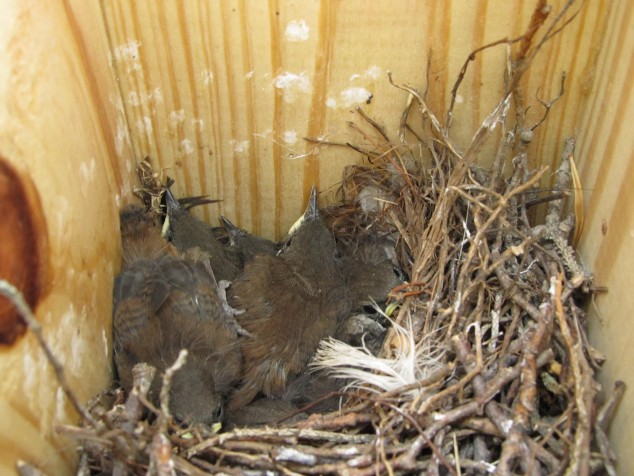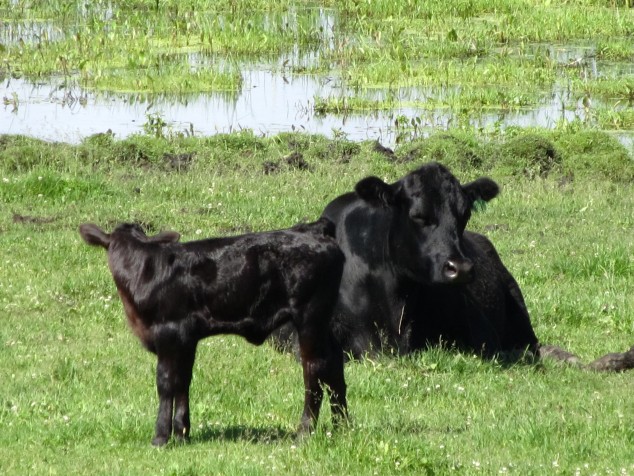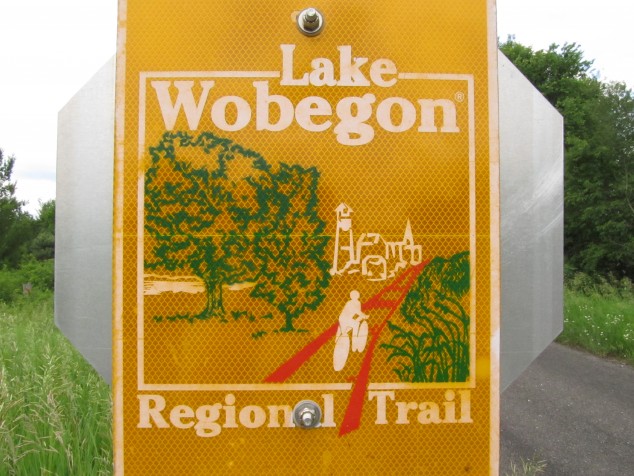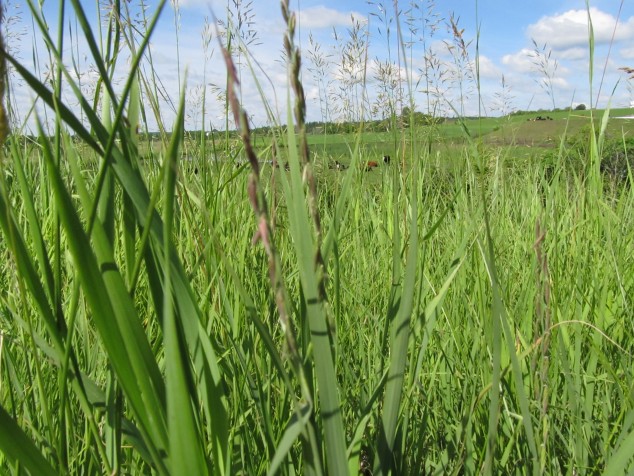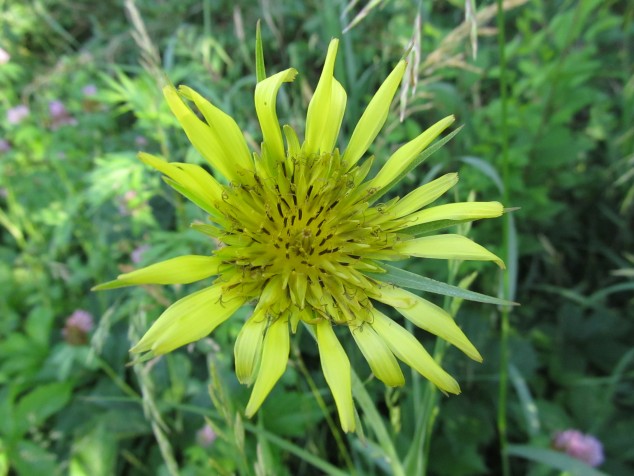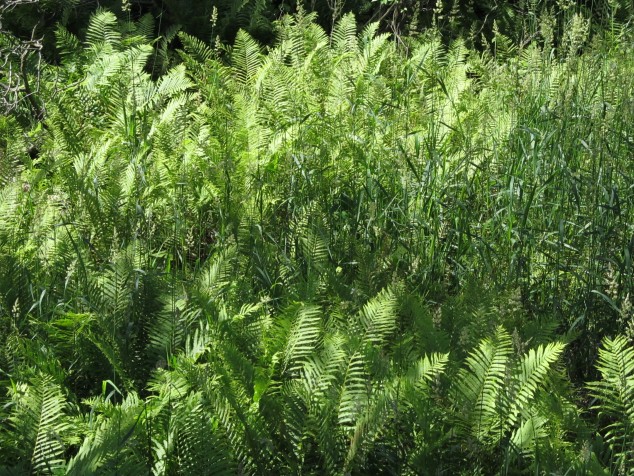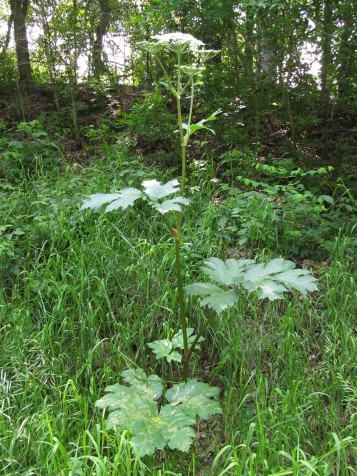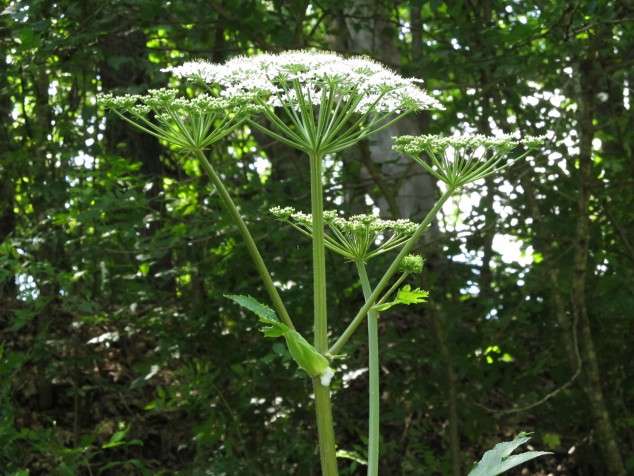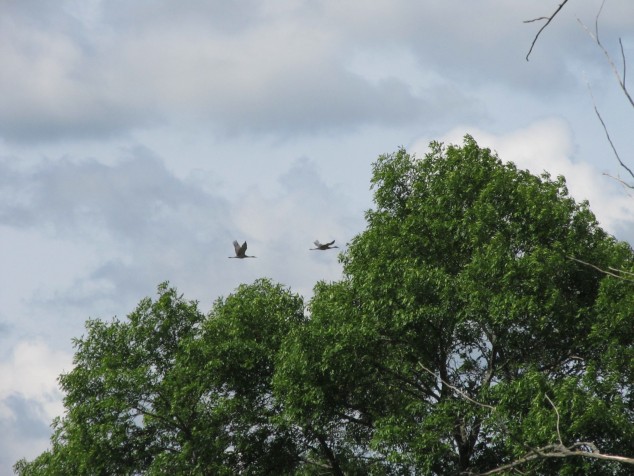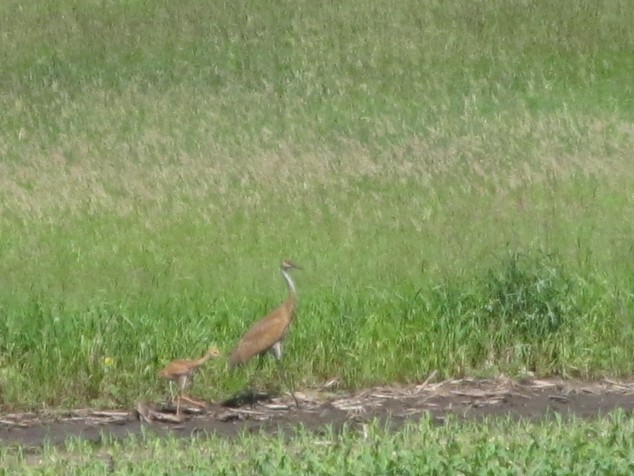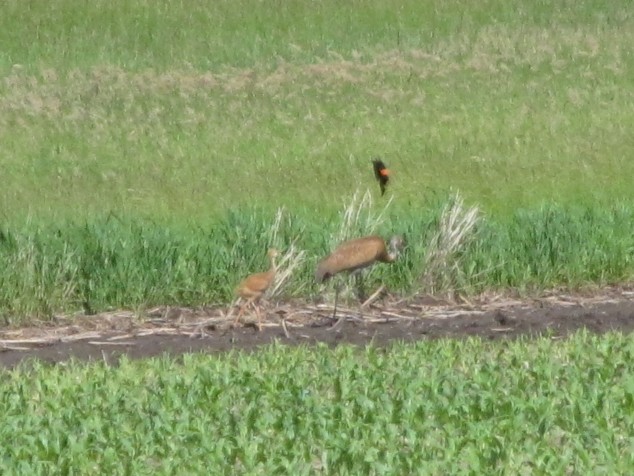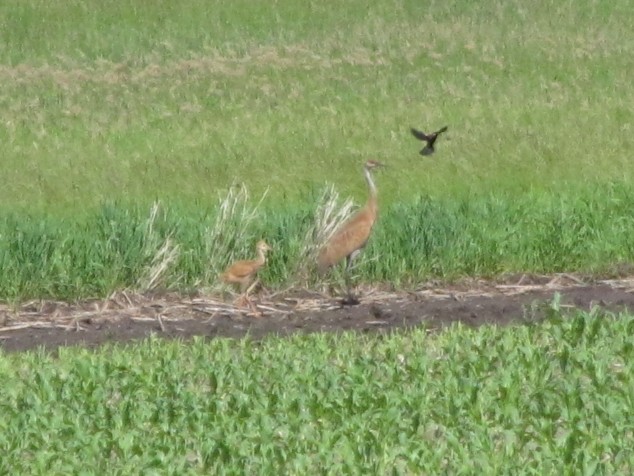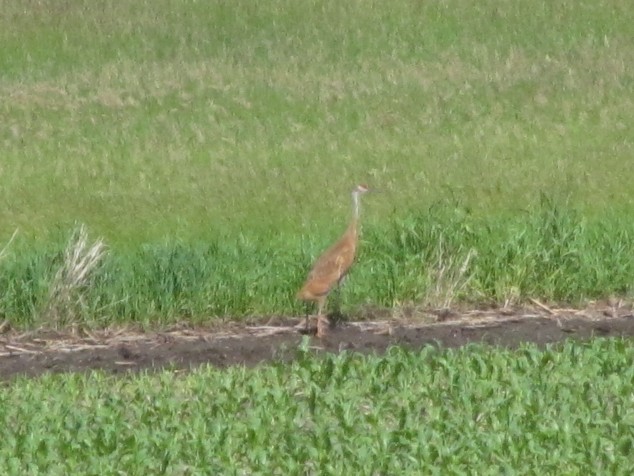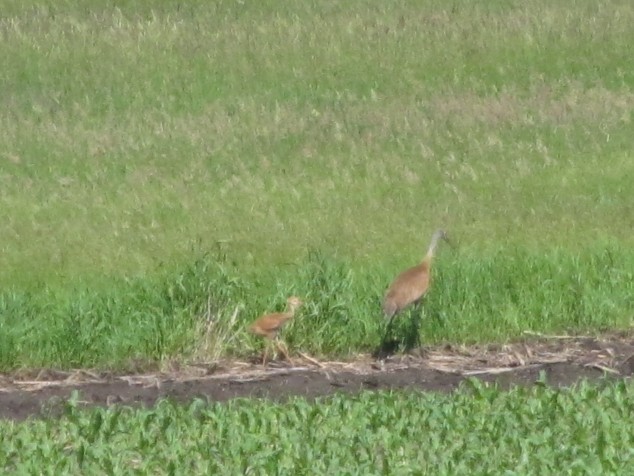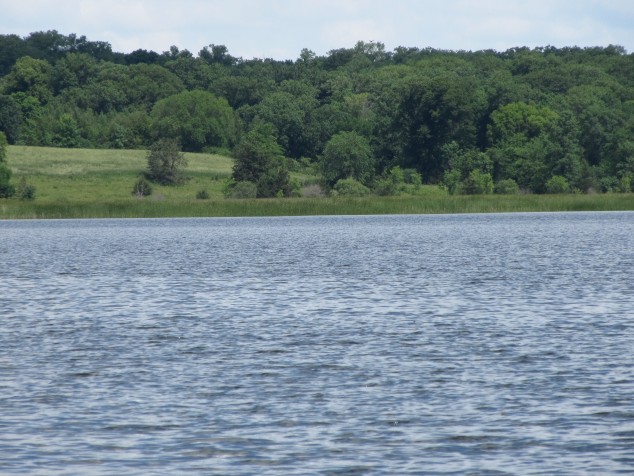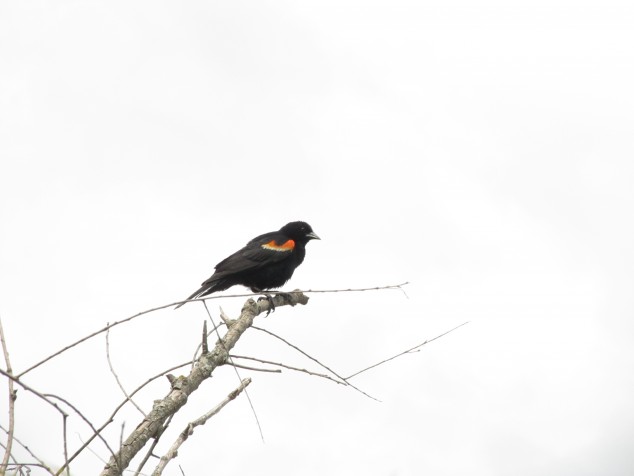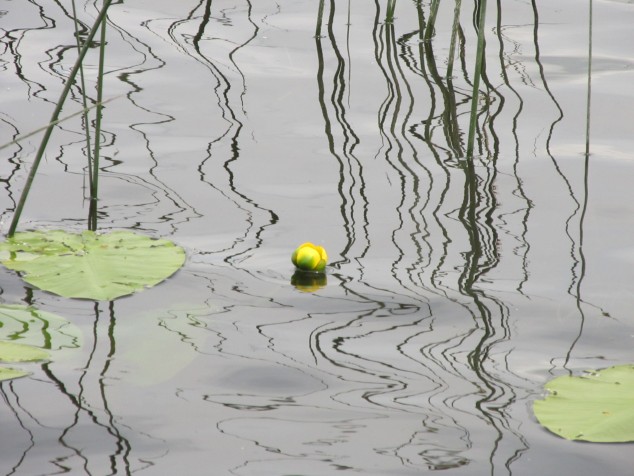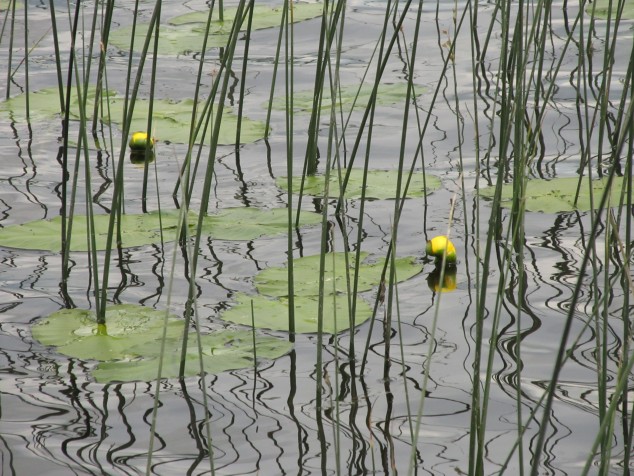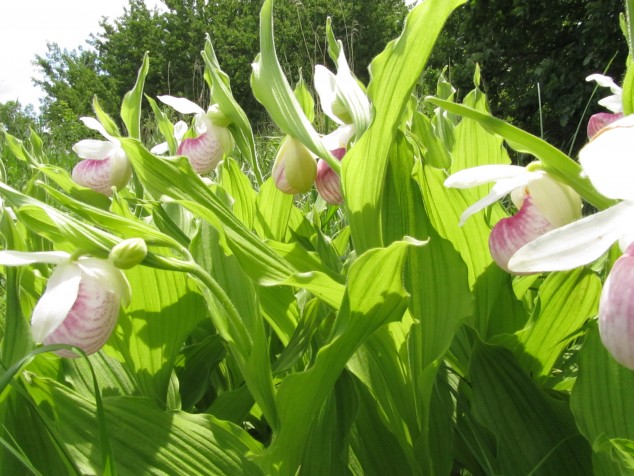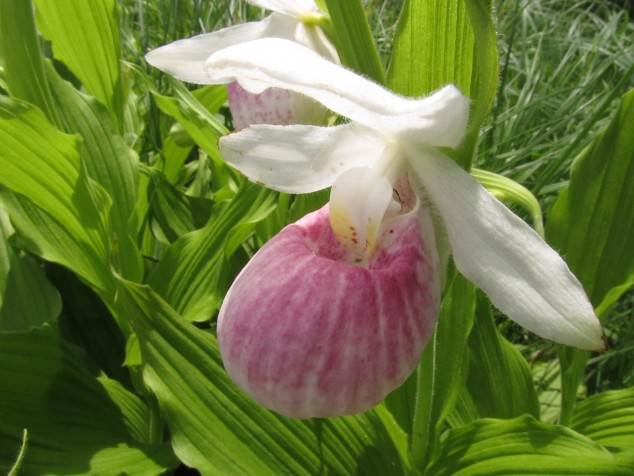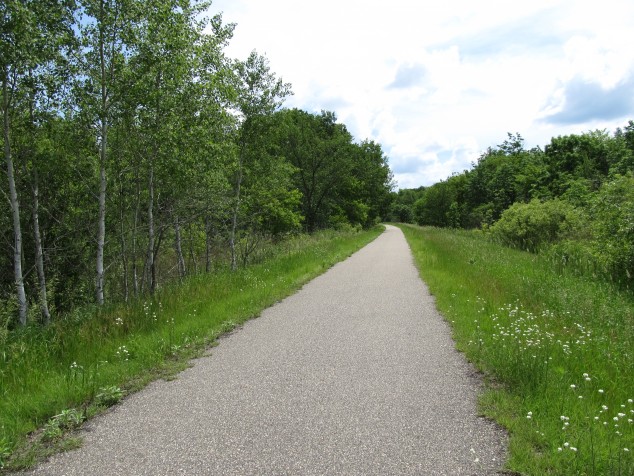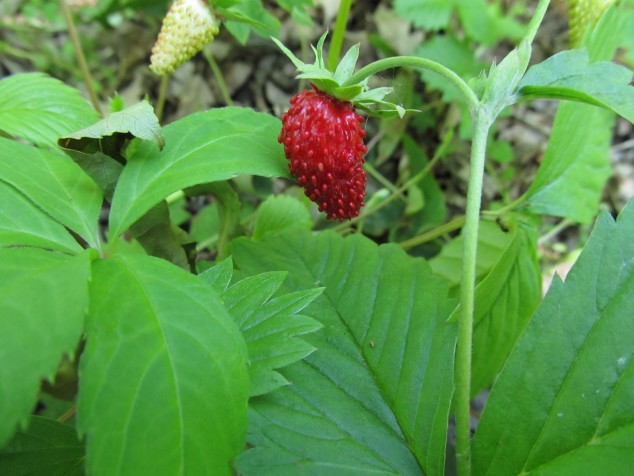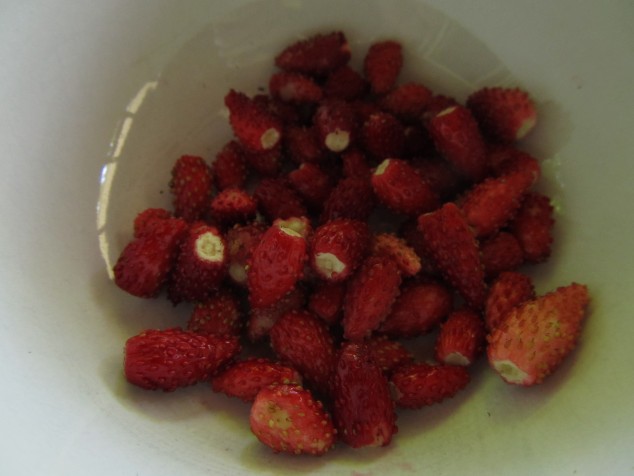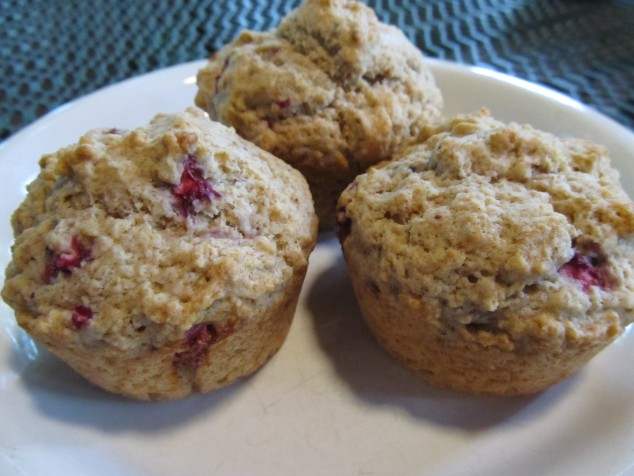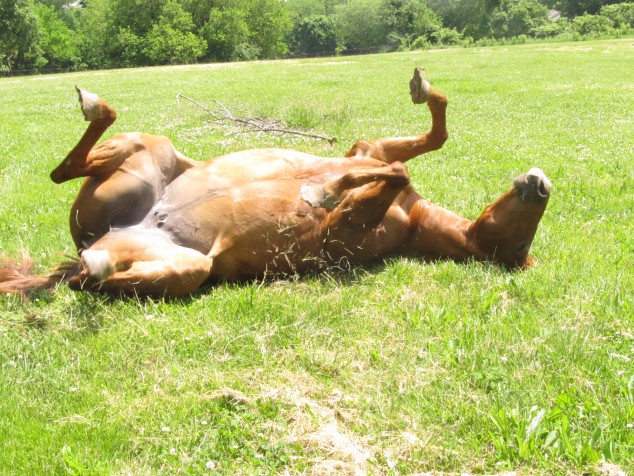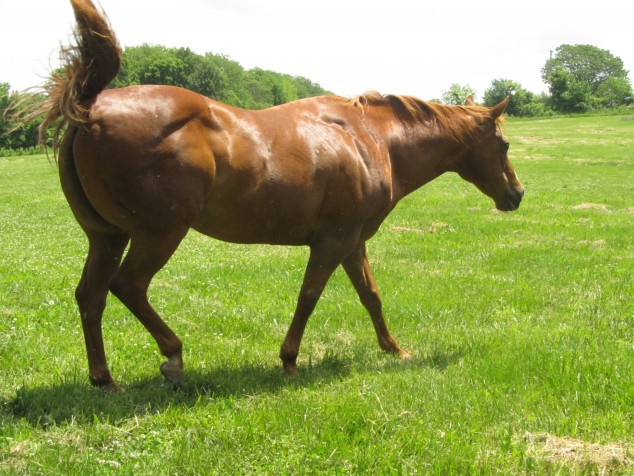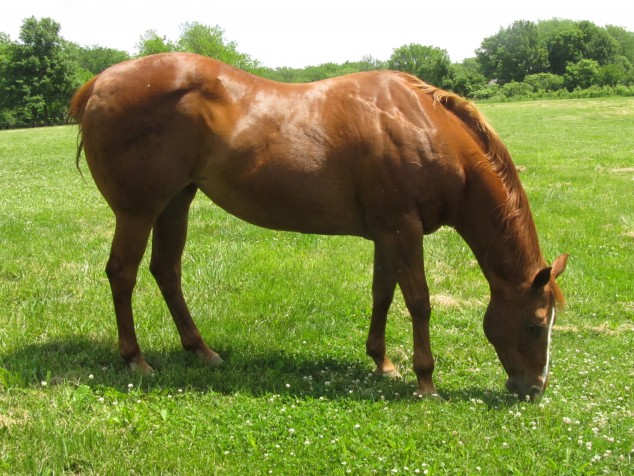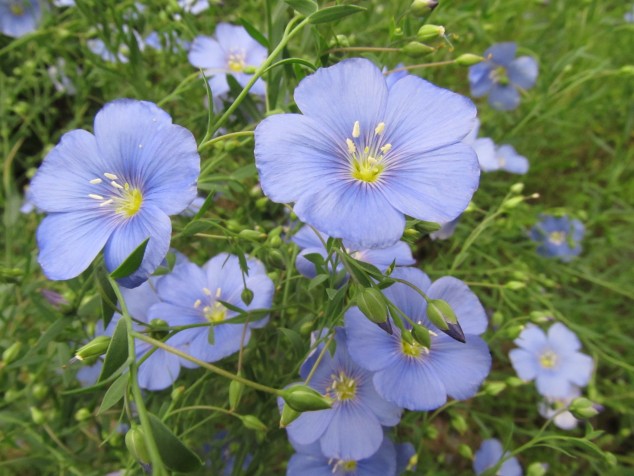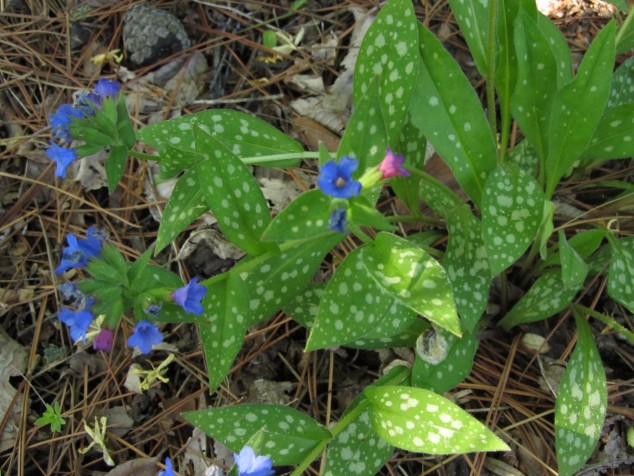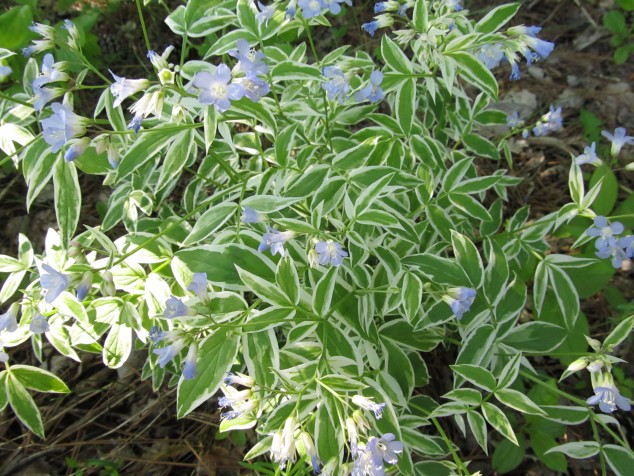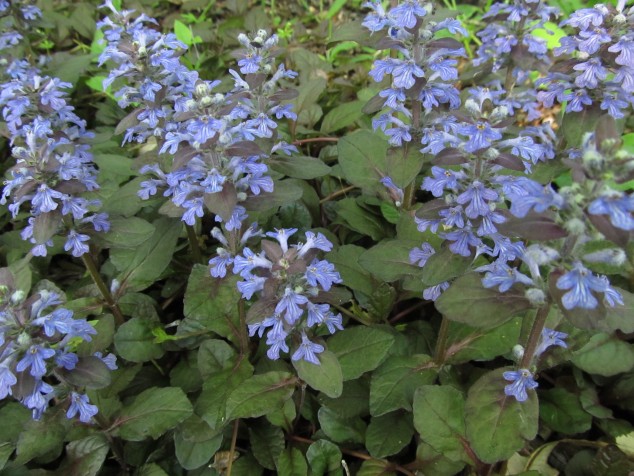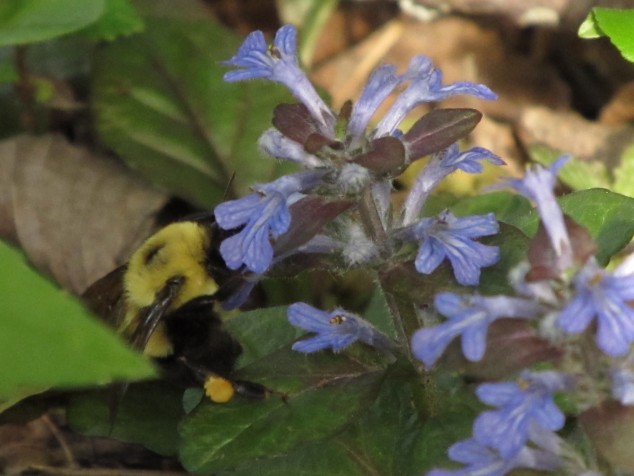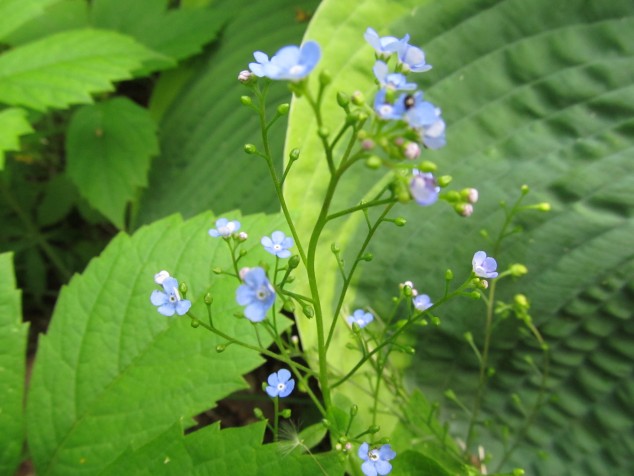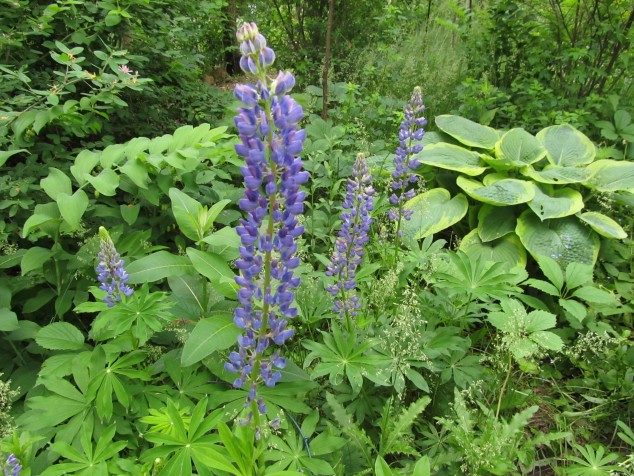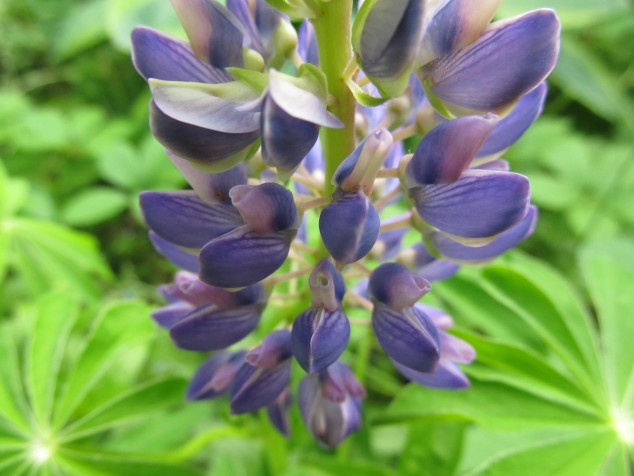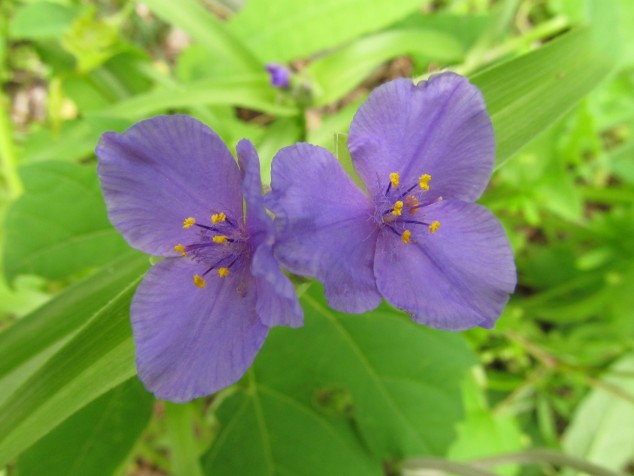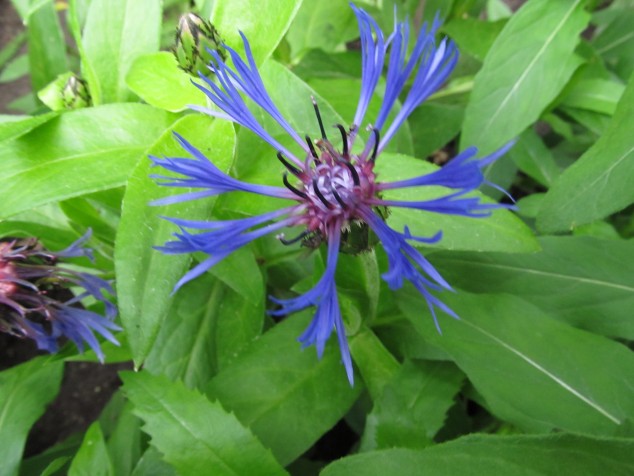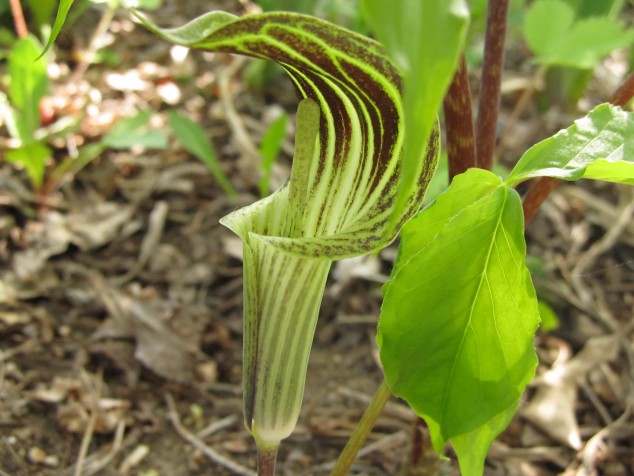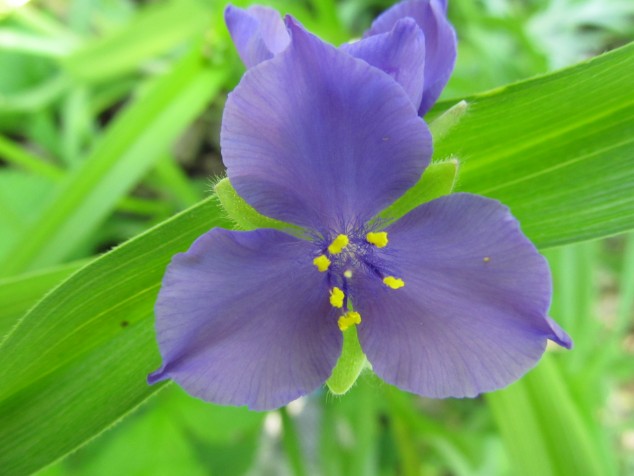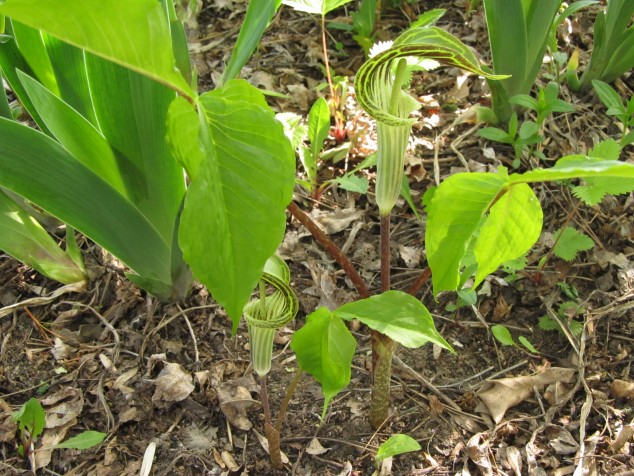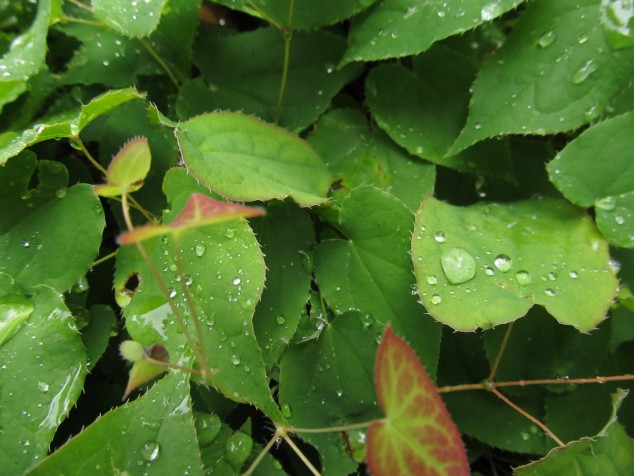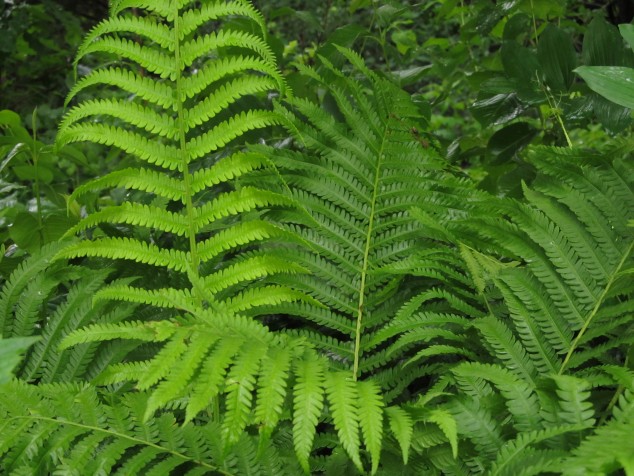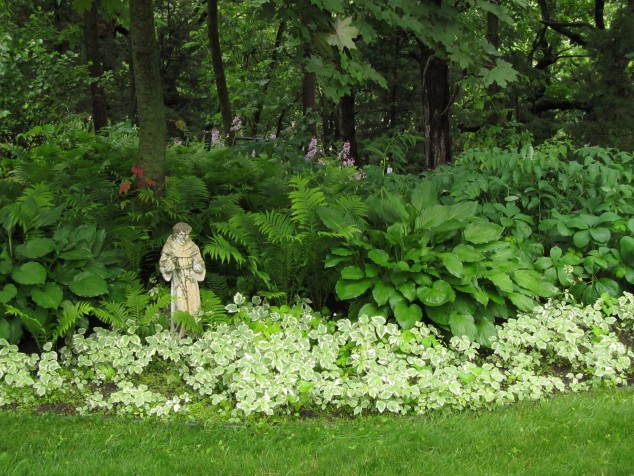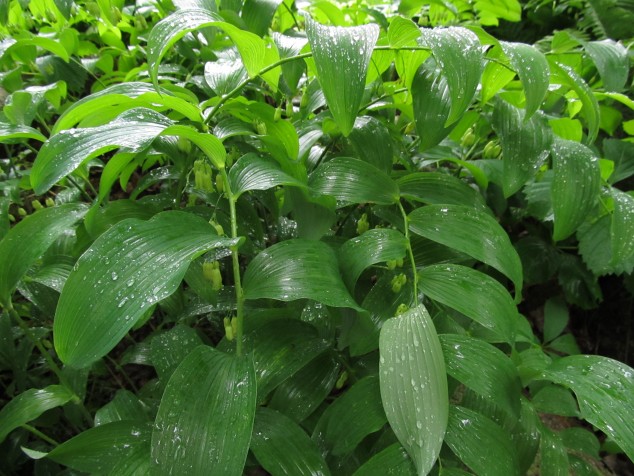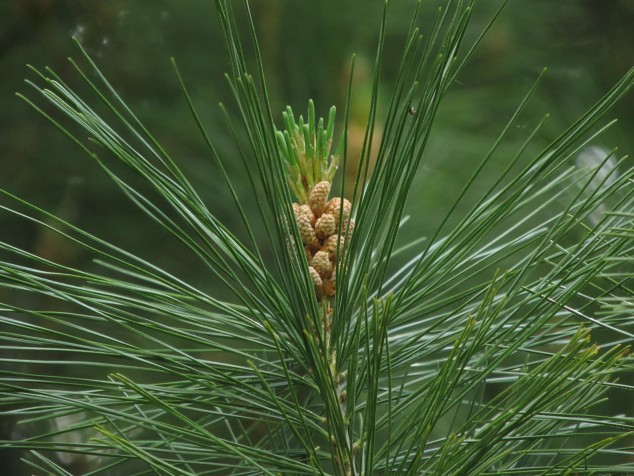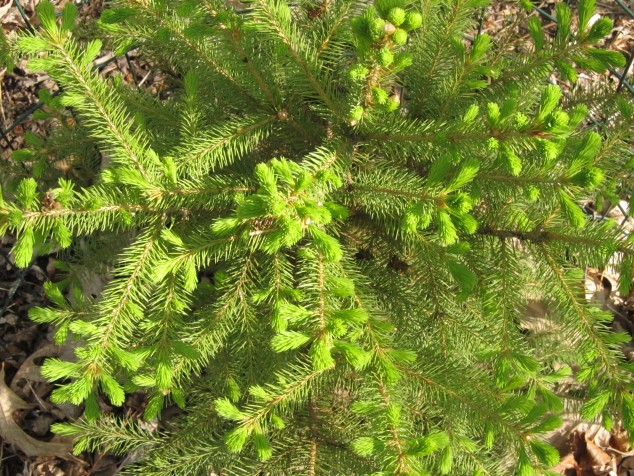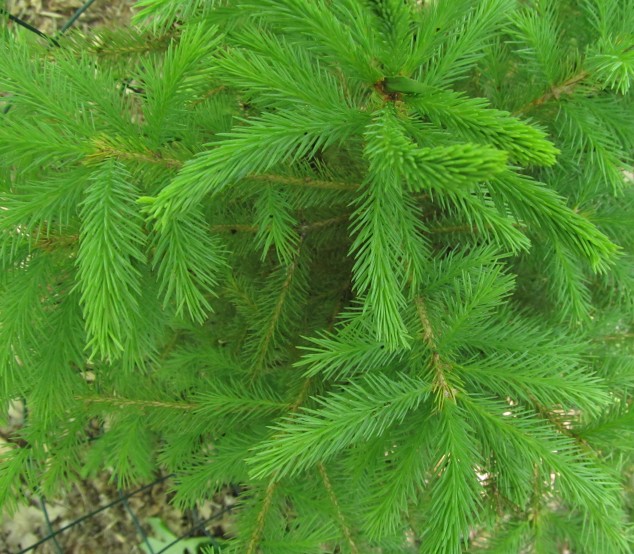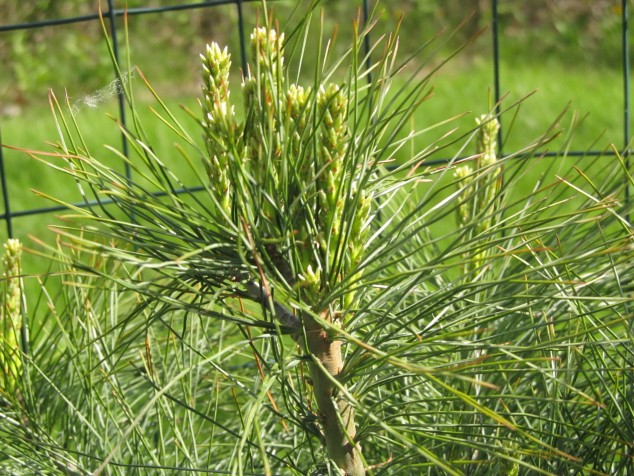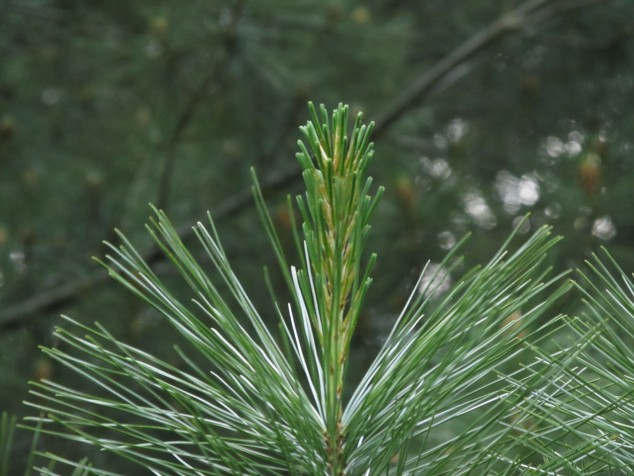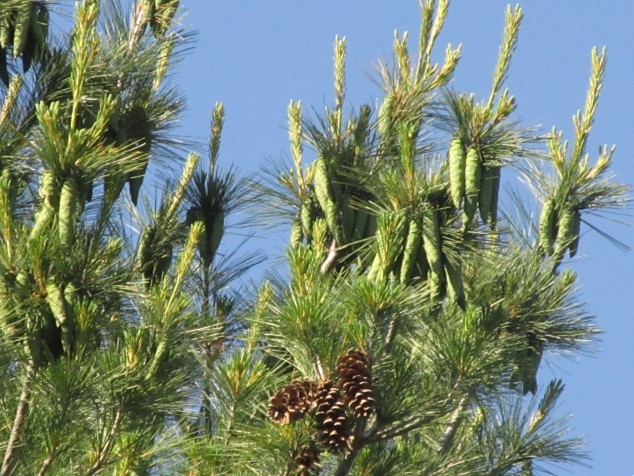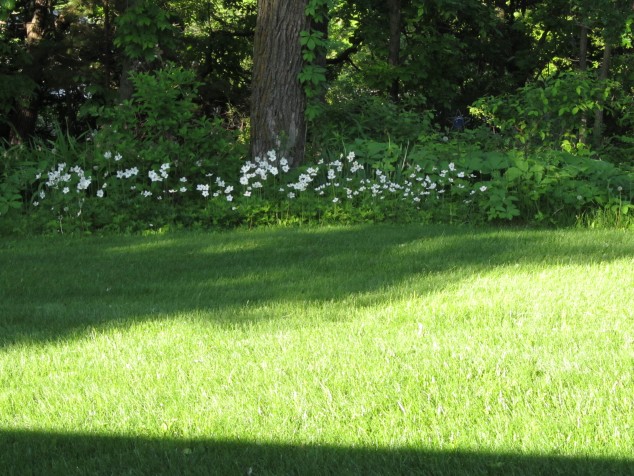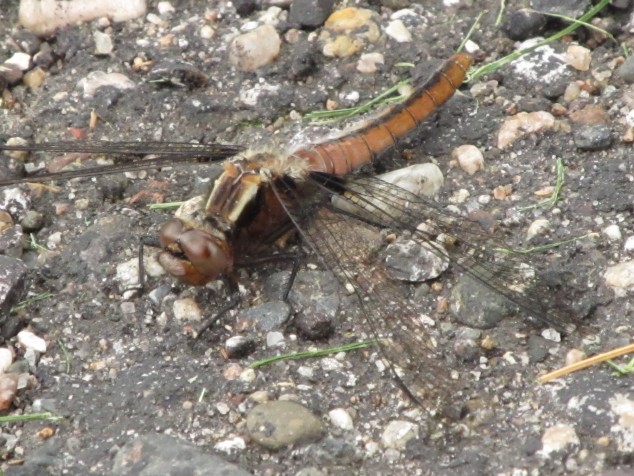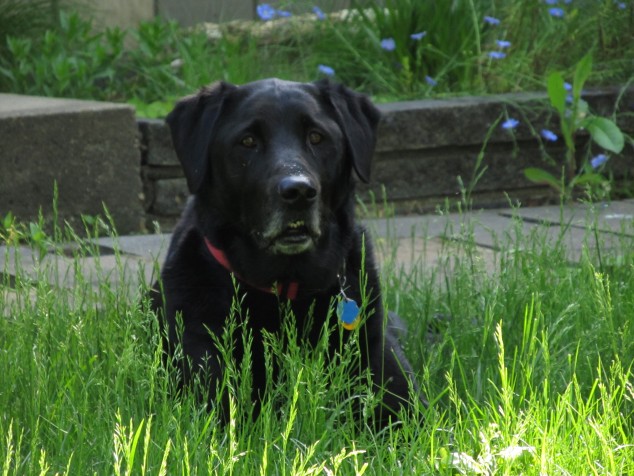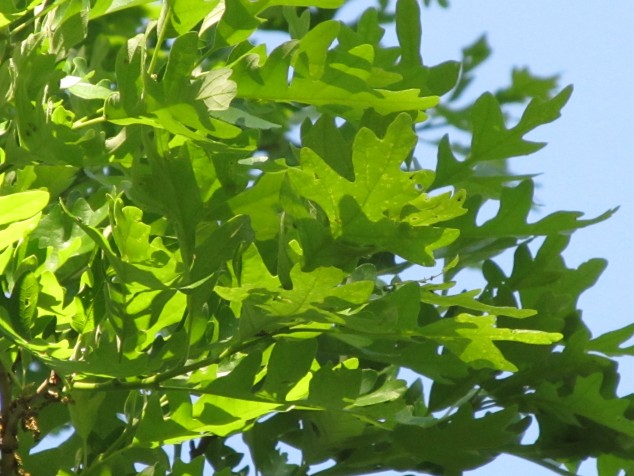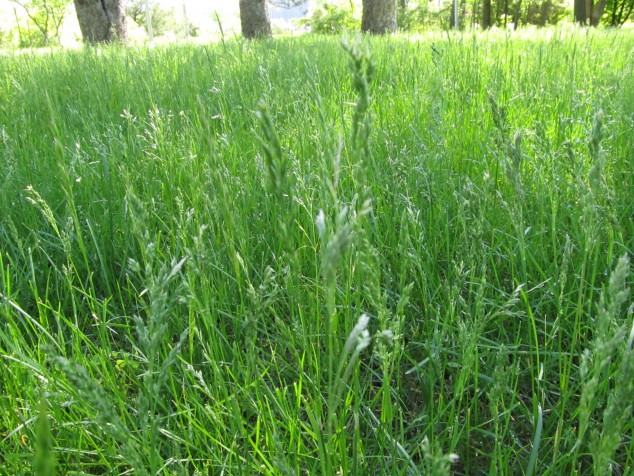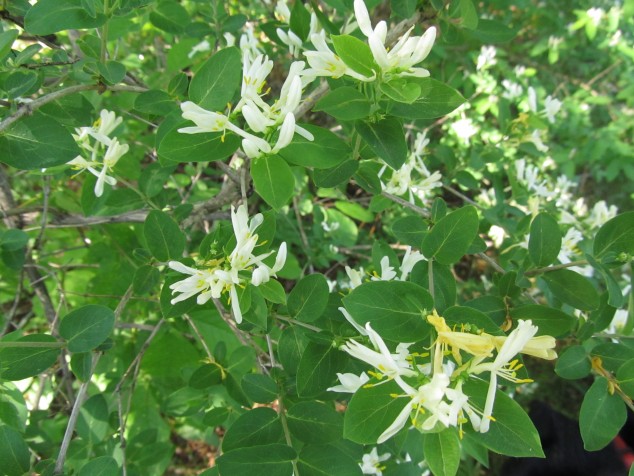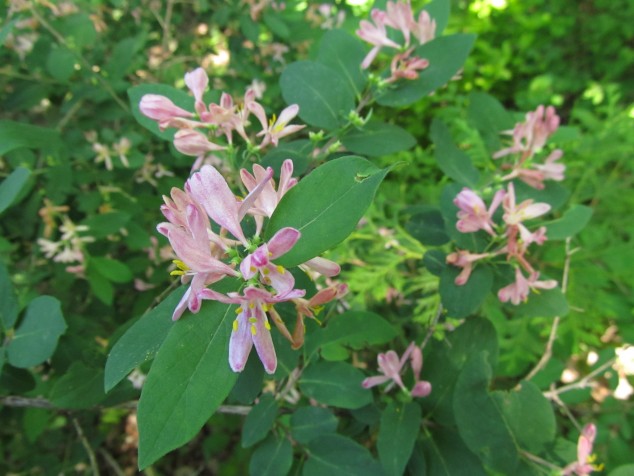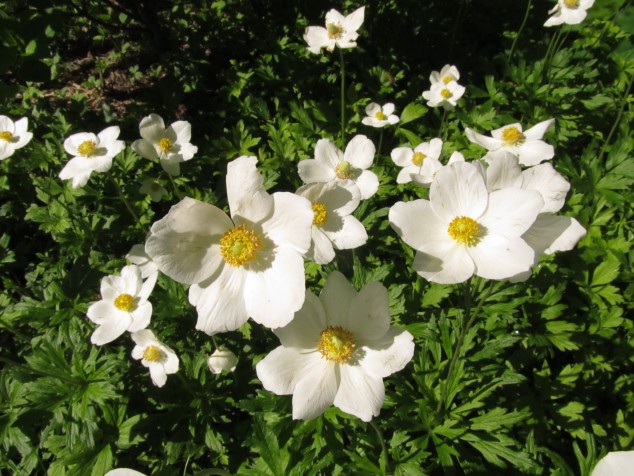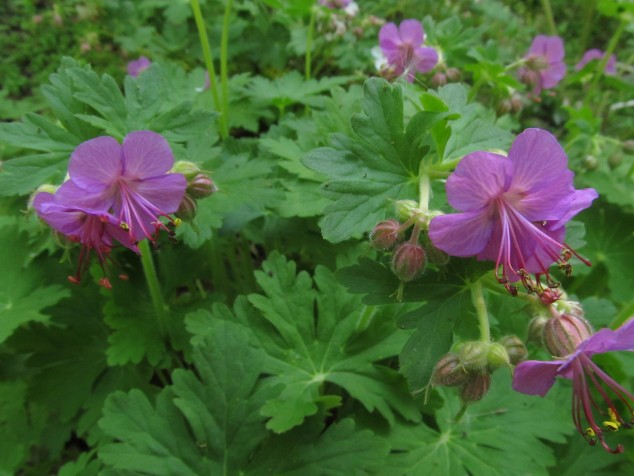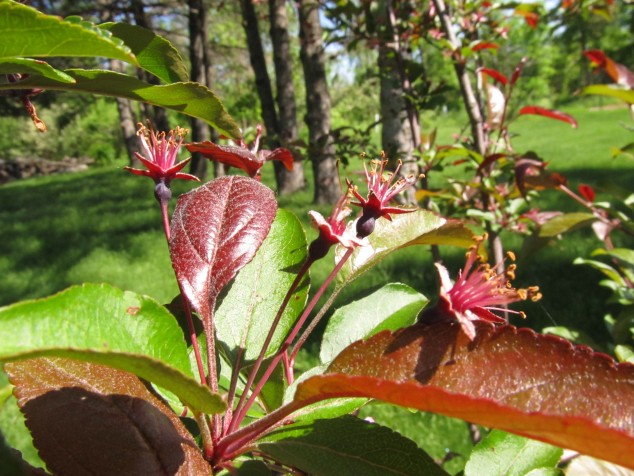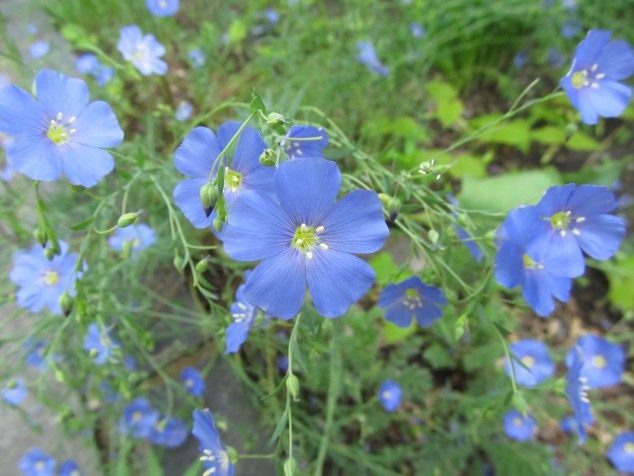My sister found a duck nest in a willow thicket in the horse pasture. Constructed in the protection of branches with grasses growing all around for camouflage, it was a perfect place to build. The nest was lined with down that the mother duck pulled from her breast and used to cover the eggs when she left the nest to feed. Her clutch needed to stay safe from raccoons, skunks, and foxes for 23-29 days after all the eggs were laid. Baby ducks hatch alert and covered with down and are ready to follow their mama to water within 16 hours! And it appears like that’s what they did!
A Yellow Warbler’s nest and eggs didn’t fare as well. On my daily walk, I noticed the warbler flying from a young, four-foot high poplar whenever I got close. When I examined the tree, I found a small nest in the crook of the branches–probably only two feet off the ground. Inside the nest were three eggs, one noticeably larger than the other two.
Mama warbler nervously flitted from place to place on the other side of the quarry fence but always kept me within her sight.
Two days after I found her nest, the ditch was mowed. The little tree was tipped slightly and most of the tall grass that had hidden the nest on one side was gone. I checked the nest a few days later–no mama bird and only one egg left in the nest. Abandoned. At first I thought it was because of the damage done by the tractor and mower–and that may have contributed to it. But with reading about Yellow Warblers, I found that Brown-headed Cowbirds often parasitize their nests, which would account for the one bigger egg. Often, then, the Warblers abandon those eggs and build another nest right on top of the old one, but since the site was compromised by the mower, she must have moved to a new place.
Every spring the House Wrens have occupied three cedar wood and birch bark houses we have hanging in the maple trees. But when Chris put up the new bluebird houses, these fierce little competitors took over the larger dwellings. The males build nests of twigs to entice their mates. The nests are then lined with feathers, grasses and other plant material to make it soft for the eggs and newborn chicks.
The mama wren was not happy with me looking at her nest–she flew from branch to branch and chattered loudly.
Her nest of seven eggs has hatched, and when I looked today, the chicks are almost fully feathered. They will soon be leaving the nest.
The search to find a mate and the perfect place to build a nest. The work it takes to build the home. The time needed to lay the eggs and incubate them. The energy it takes to feed the brood and keep them safe until they leave. Things that can derail the whole process. Mishaps and mistakes that change the course. Daily problems that need attention. This is the life of parents–whether warbler, wren or human.
Duck nest pictures by Dawn Gehrke
